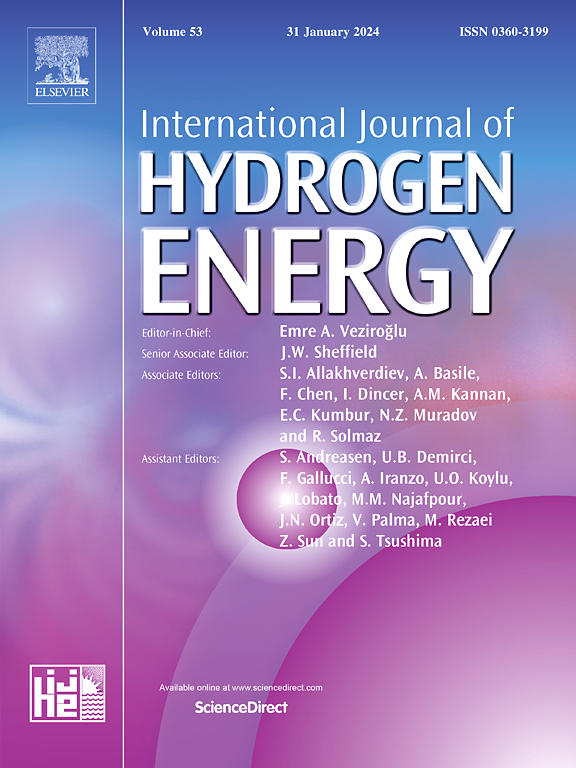Construction of proton exchange membrane with high proton conductivity based on 3D self-assembly structures as multiple proton transport channels
Published:2 December 2024
DOI: 10.1016/j.ijhydene.2024.11.355
Lingwei Li , Jiale Zhao , Yijiao Zhang , Yao Wang , Yanming Wang , Bihai Su , Feibo Li , Linlin Shi , Ping Li , Zhixiao Zhang , Xiaoliang Zhang , Jingbo Mu , Yu Dong
Abstract
Proton exchange membranes are currently of a great interest due to their tunable proton transport channels in design. However, the construction of proton transport channels in composite membranes still encounters enormous challenges. In this study, a series of composite membranes composed of nanocomposites reinforced with electrostatically self-assembly of zirconium phosphate (ZrP) and poly(diallyldimethylammonium chloride) (PDDA)modified sulfonated halloysite (PSHNT) were designed and prepared. Further, long-range ordered proton transport channels were constructed in the membrane owing to synergistic effect of ZrP and PSHNT. It is revealed that acidic groups of ZrP nanoparticles and PSHNT yield more acidic sites for effective proton transport, and hollow tubular halloysite creates a fast channel for proton transport via a vehicle-type mechanism. The excellent hydrophilicity of ZrP/PSHNT and their good dispersion in polymer matrices result in a much higher water absorption of 45.5% and a lower swelling rate of 6.4% at 80?°C. More impressively, SPI-ZrP/PSHNT-6 exhibits a remarkable proton conductivity of 288.2?mS?cm?1 at 80?°C under hydrated conditions. In addition, due to its excellent proton conductivity, a high peak power density up to 230.2?mW?cm?2?has been achieved in H2-Air fuel cell. The excellent material performance of such proton exchange membranes in this study paves a new way towards the commercialization of high-performance proton exchange membranes in future applications for hydrogen fuel cell.





